Automatic language translation
Our website uses an automatic service to translate our content into different languages. These translations should be used as a guide only. See our Accessibility page for further information.
Geoff is one of several inmates whose artworks have been purchased by the Department of Corrective Services.
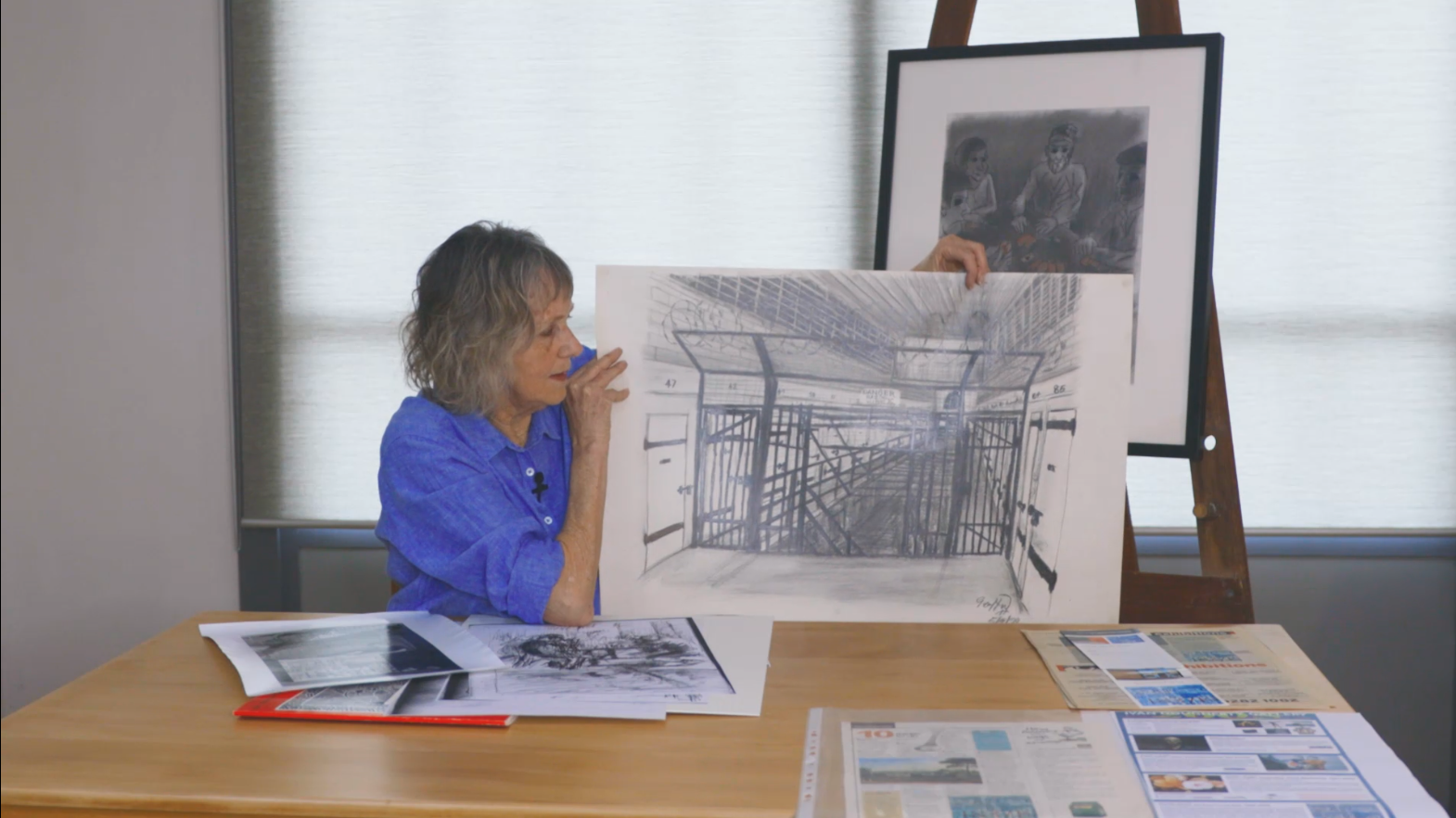
Sue Paull talks about her former student, Geoff Websdale
Sue Paull talks about her former student, Geoff Websdale
My name's Sue Paul.
I was invited to set up an art class in maximum security at Long Bay in 1986.
Little did I know that I would actually develop, go on to develop a specialist art program, set up a Boom the Boom Gate gallery at Long Bay and I also established the department's art collection.
I didn't realise I'd be there for 25 years.
I'd like to discuss the work of Jeff Websdale.
Jeff also has 2 main strands of to his work.
The early work particular is figurative, where he was documenting the prison itself and the inmates when he first started doing drawings.
They're quite realistic.
And this is probably an example where people are most starting, you know, when they're starting out with drawing, they want to make it as real as possible.
But then over time, the works then start to become can become much more expressive and have be more emotive, be more descriptive and have a lot more feeling in them.
Again, this this is starting to just free up a little bit.
Men in the yard portrait of an inmate.
You can see in this how he's just starting to become a little bit more comfortable with the medium in this this case a charcoal pencil.
But certainly just having it's more expressive.
This work is a self-portrait.
He did quite a series of works showing showing himself in different states, whether it was anxiety, whether he was feeling calm and tranquil or whether he was feeling more depressed.
He did some series of drawings of the yard.
Again, this one's quite realistic, but it's definitely much more mature than his works.
His drawings from a couple of years beforehand, but then with he progressively becomes much freer.
Very interesting.
I actually personally I prefer these freer works.
I think they're far more expressive and just have, I think just formally, there's a lot more to to to look at in the, in the way that he's using line and this other one in in the yard.
It's almost like furtive in the way that I think the inmates are kind of the way that the the body, their body language, the way that Jeff's capturing the inmates talking around the table.
This is the large drawing and it shows how important that art can be a record of an important documentation.
Because this no longer exists in one of the wings, they at one point they turned the upstairs level into a protection area.
So this no longer exists.
But you can see that they they added razor wire, they added an extra layer of security so that the people, the man in the main, the main part of the gel downstairs in the wing that they couldn't get access to people in the protection.
And I think he's used a graphite stick.
So it's, I think it's very, very successful formally.
And you can see that there's been a really big maturity.
There's been a lot of maturity in his work in his drawing over over the a couple of years in the early 90s, I was asked if I'd prepare a curriculum for an, an art curriculum for the department.
So I can, I prepared this, this publication Vocational Art Studies and I mentioned that in that Jeff Webster illustrated a number of the, the areas of work that we were were were looking at in the syllabus.
And this one, we were exploring qualities of line, the way you can use line and different materials that have a really big impact on the way you can express, you know, or portray something.
So yes, that was really an interesting and great collaboration with the inmates.
Another dimension to Jeff's work was conceptually dealing with sophisticated material subjects.
In this particular work, innovations of identification.
This this is also in the department's collection.
At first it looks like maybe it's an abstract or semi abstract image and you may wonder what it's all about.
But he created this in response to new legislation that was introduced where certain inmates were required to give DNA samples.
This was became compulsory and Jeff was very, very upset and annoyed by this.
He thought it was an infringement on his privacy.
So he fought against it initially but to no avail.
And in this work, he what he has done is it's his response by saying, OK, have it all, have it your way.
So you'll notice that there is his barcode that is used because they have a weekly buy up.
The all the inmates have a weekly buy up and that's the barcode used for that.
It has his min number.
Every inmate has a particular their own min number.
It has his portrait, his photograph there from his ID card.
It has his date of birth.
It's very subtle, but in the background is a large imprint of his fingerprint.
And there's the word eloqui written in it. Eloqui, the Latin, which means to speak out.
So what he's done with all of those various elements is that he's changed the scale of them and he's changed the density or the tonal difference.
Consequently, with tone and with size, by varying both of those, he's creating a lot of depth.
Certain parts of the composition are going way back and a lot of it is actually coming forward.
So this was an incredibly mature work, both the concept and the way that it was portrayed.
In fact, the Attorney General and also the Minister for Justice at the time, John Hatzistergos, wanted this work to be displayed in their boardroom.
So, it subsequently became part of the department's collection.
Yeah, I just think it's an extraordinary piece of work.
Websdale’s striking painting Innovations of Identification is a bold personal and political response to issues surrounding individual identification, the right to privacy and ownership of your own identity.
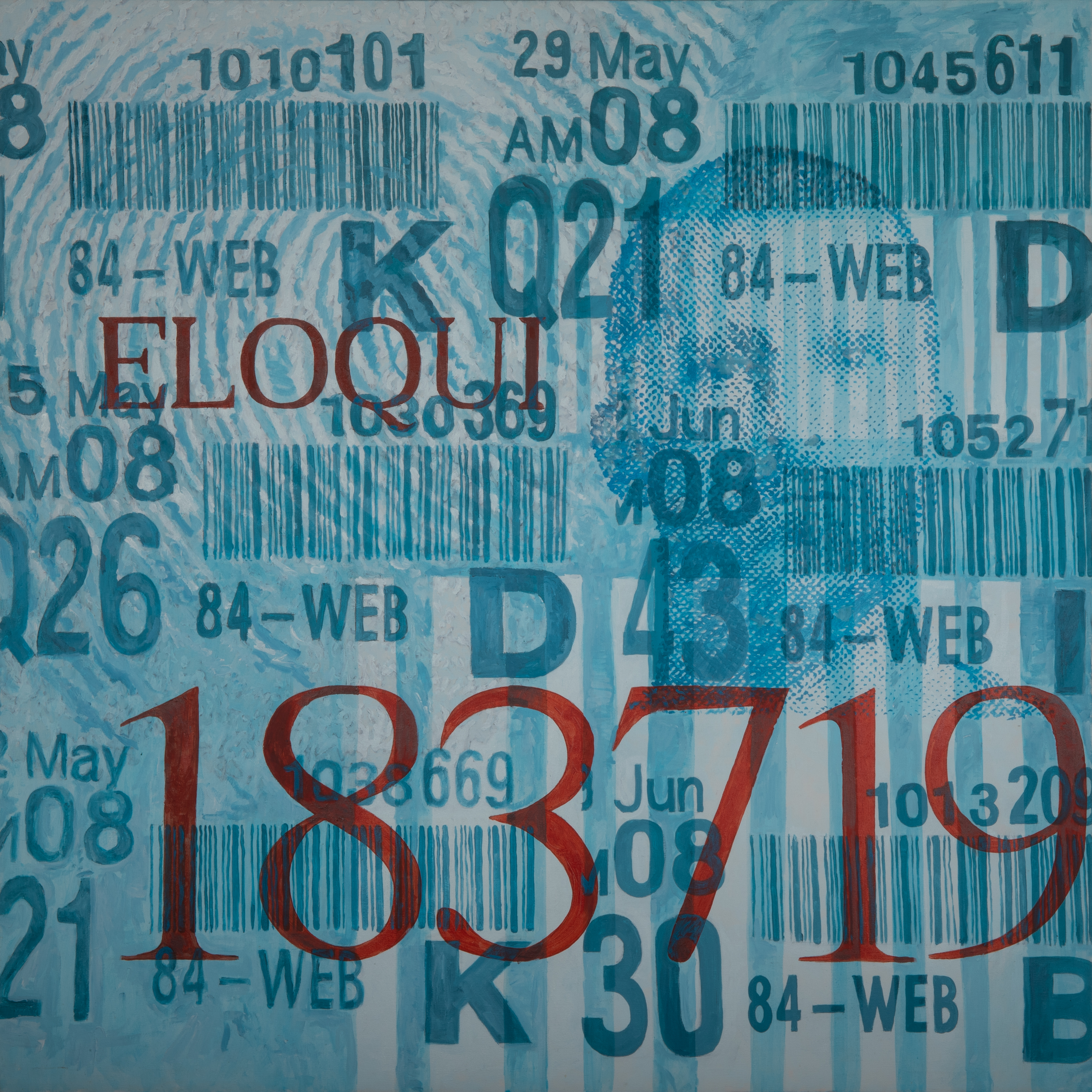
Innovations of identification
Acrylic on canvas, 2003
It was motivated largely by the introduction of mandatory DNA testing of NSW Prison inmates which began on Jan 1st, 2001. Geoff felt strongly about the protection of a person’s right to their own privacy and believed this move by the state to take DNA from certain inmates represented a massive breach. Innovations of identification depicts the wholescale access to his identity Geoff was forced to provide while incarcerated.
In the multilayered and highly graphic painting, elements of Geoff’s private personal ID documents are replicated and repeated for all to see: his MIN number (the six-digit correctional centre identification number); his inmate ID photograph/mugshot; his date of birth; his fingerprint; and the barcode inmates were issued for purchases such as the weekly ‘buy-ups’. The word ELOQUI also appears in prevalent red lettering – it is from Latin, meaning to "speak out." Cell bars are visible in the background.
The implied statement of the painting is: ‘Here is all my private information on display, take everything!’
Altering scale, positioning and tonal value of the data creates layers of depth and movement in the composition. There is much for the viewer’s eye to explore.
Of his art practice Geoff wrote: “Self-expression is a path to an individual’s understanding of himself. In a lot of cases particularly my own, being able to express myself in a non-verbal fashion has lessened anxieties and enabled myself to express myself verbally on a social scale.”
Geoff’s work was exhibited extensively at the Boom Gate Gallery. In 2005 the media selected Geoff’s painting to promote Convictions, the inmate exhibition at the College of Fine Arts, Paddington. Innovations of identification was also used to decorate various departmental publications.
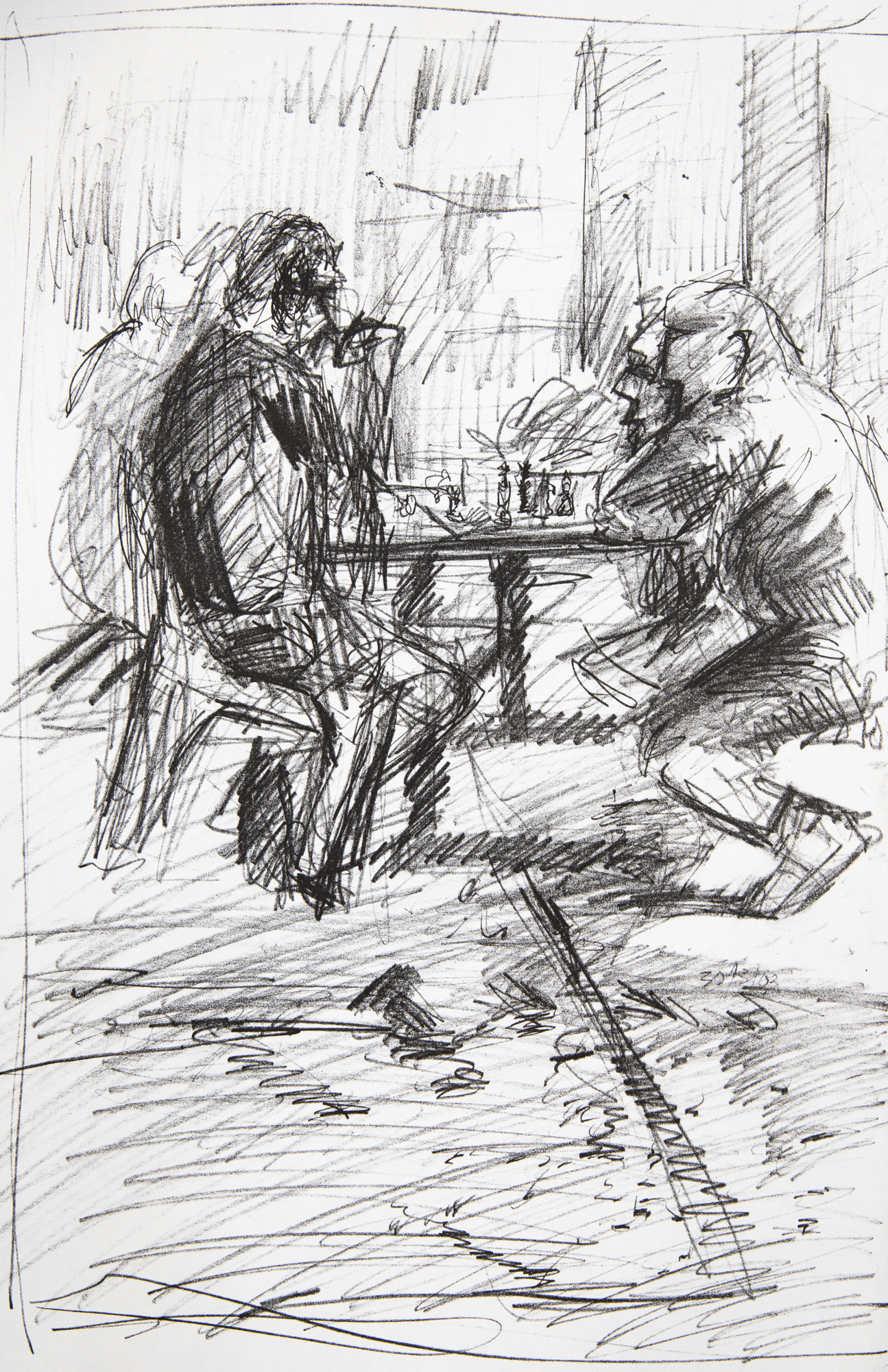
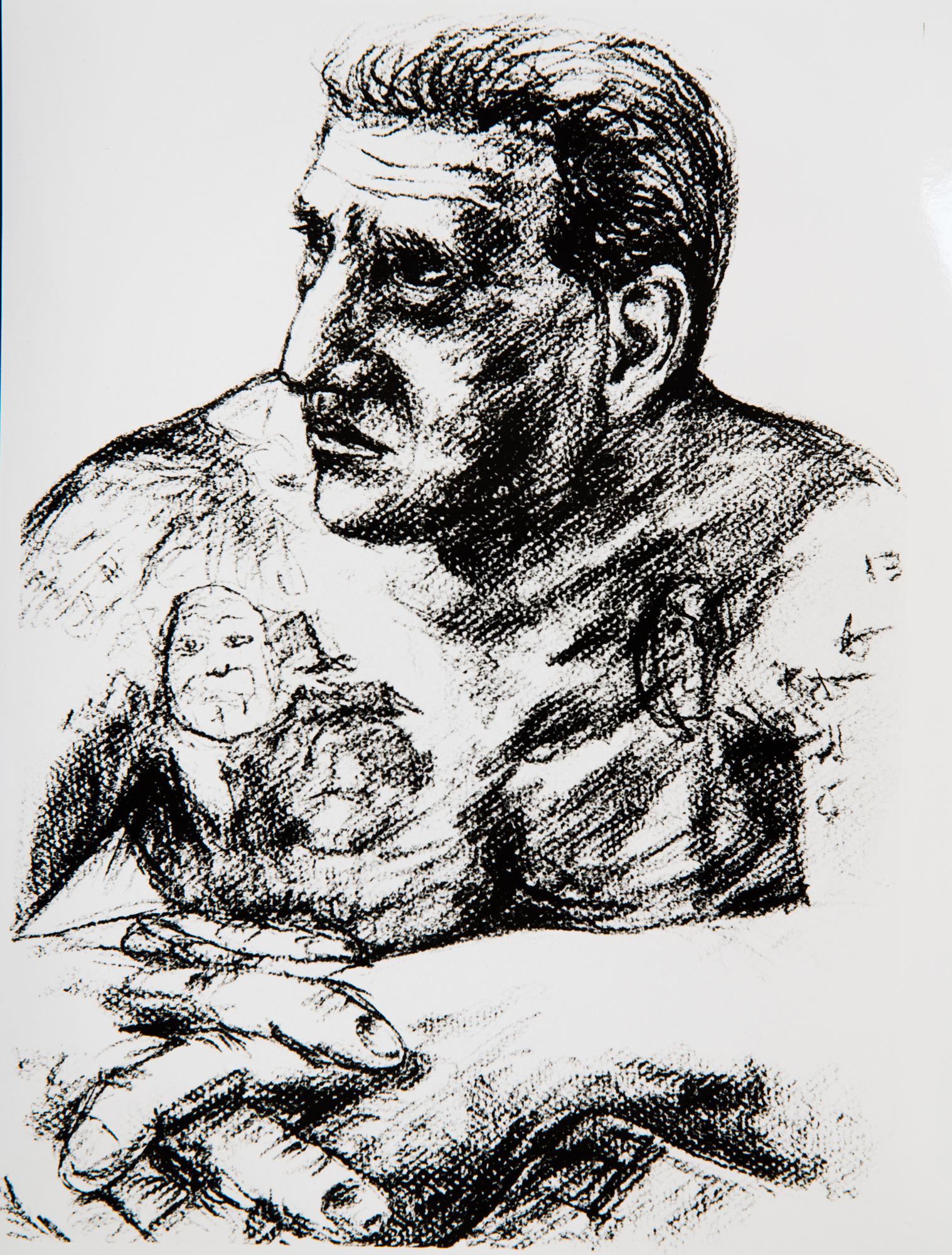
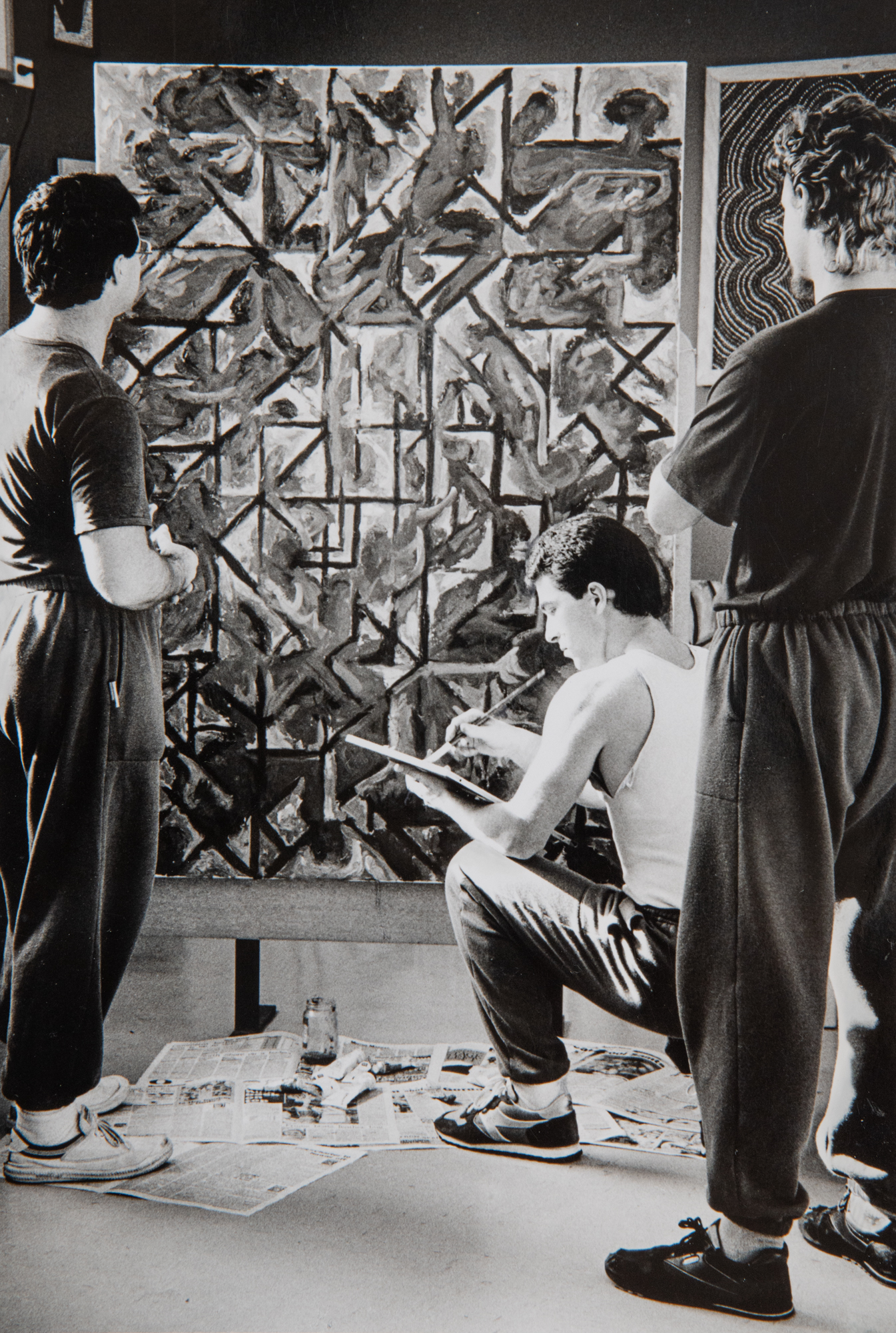
Find out more about the Department of Corrective Services art collection.
Last updated:
We acknowledge Aboriginal people as the First Nations Peoples of NSW and pay our respects to Elders past, present, and future.
Informed by lessons of the past, Department of Communities and Justice is improving how we work with Aboriginal people and communities. We listen and learn from the knowledge, strength and resilience of Stolen Generations Survivors, Aboriginal Elders and Aboriginal communities.
You can access our apology to the Stolen Generations.